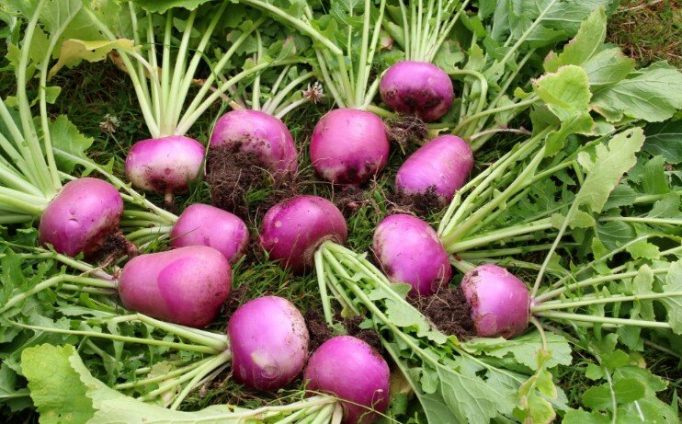Turnip (white turnip) is a cultivar of Brassica rapa with fleshy white taproots and green tops. The smaller and tender varieties eaten by humans while the large ones serve as livestock feed.

The name may also mean rutabaga (swede, neep, or snagger) in Eastern Canada, Northern England, and in Scotland. Although these two belong to the genus
Brassica, they belong to different species.
Can bunnies eat turnips?
Yes, Bunnies can eat turnips occasionally. They are safe. However, like any other root vegetable that rabbits can eat like carrots, parsnips, and swede or any others that are not leafy, give them only a teaspoon per two pounds of their body weight as a snack.
Nutritionally, this root vegetable has carbohydrates, fiber, vitamin C, as well as smaller quantities of nutrients like folate, calcium, potassium, fiber, manganese, phosphorus, among others.
Although not high in carbohydrates, it is not high in fiber, and its nutrients levels are a little low. Therefore, don’t give your bunny more amounts as it will be less beneficial.
Can rabbits eat turnip greens?
Bunnies can eat turnip greens or tops. These tops can be part of their leafy green mix. A chopped cup of about six different types of these vegetables is enough for a rabbit whose weight is two pounds.
You can mix it with kale, watercress, parsley, radishes, asparagus, wheatgrass, dandelion greens, romaine lettuce, Bok Choy, cilantro, Mache, arugula, endive, spring greens, collard greens, borage leaves, and so forth.
The only thing you need to do is ensure you don’t include more than one type of high oxalate vegetables like spinach, parsley, beet greens, Swiss chard, radish tops, or sprouts.
Finally, turnip tops are nutritionally superior to roots, and they are rich in vitamins K and C, vitamin A, including beta-Carotene, folate, and copper. They are also moderate in vitamin B6, riboflavin, pantothenic acid, calcium, vitamin E, manganese, iron, magnesium, phosphorus, among others.
How to offer them to your bunnies?
For both the roots and tops, you need to introduce them slowly, beginning with a tiny bit as you increase the amount to what we have recommended. This mode of feeding will give your rabbit’s tummy a chance to adjust. However, if there are stomach upsets, switch to foods they usually eat.
Secondly, ensure they are free of farm chemicals and wash them. Cut the root into a bite-size while for the tops, chop and mix with other leafy greens.
Finally, only feed bunnies raw turnips or their tops. Avoid cooked ones. These pets don’t eat any cooked food while in the wild. Why would you want to do so for them? If you have cooked scrapping, discard them since they have salts and other additives you used while cooking them.
